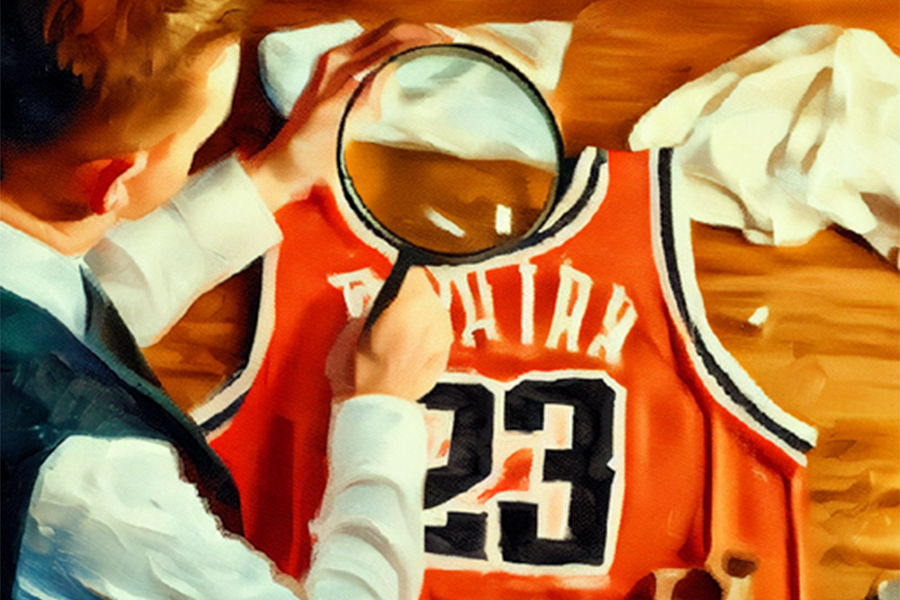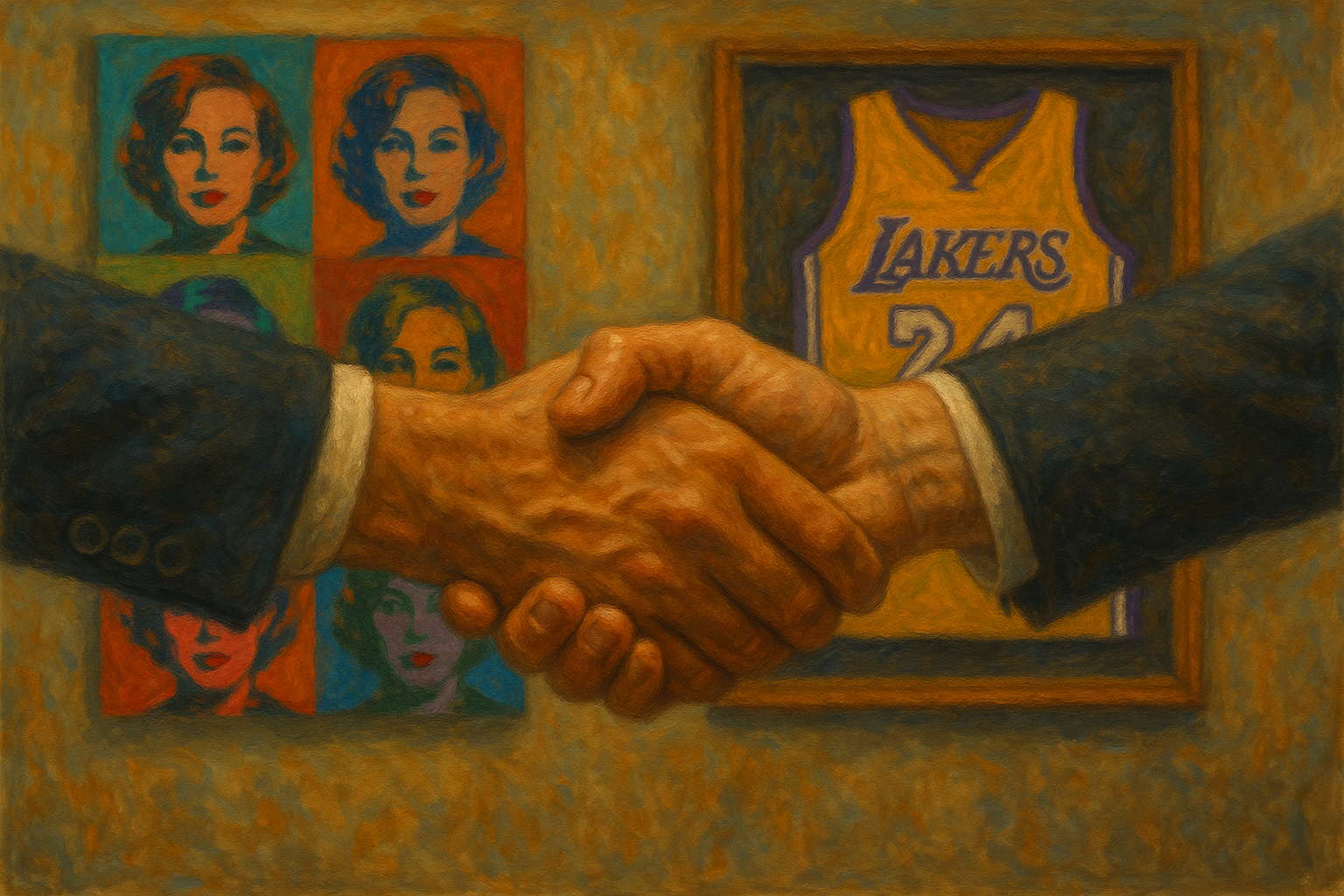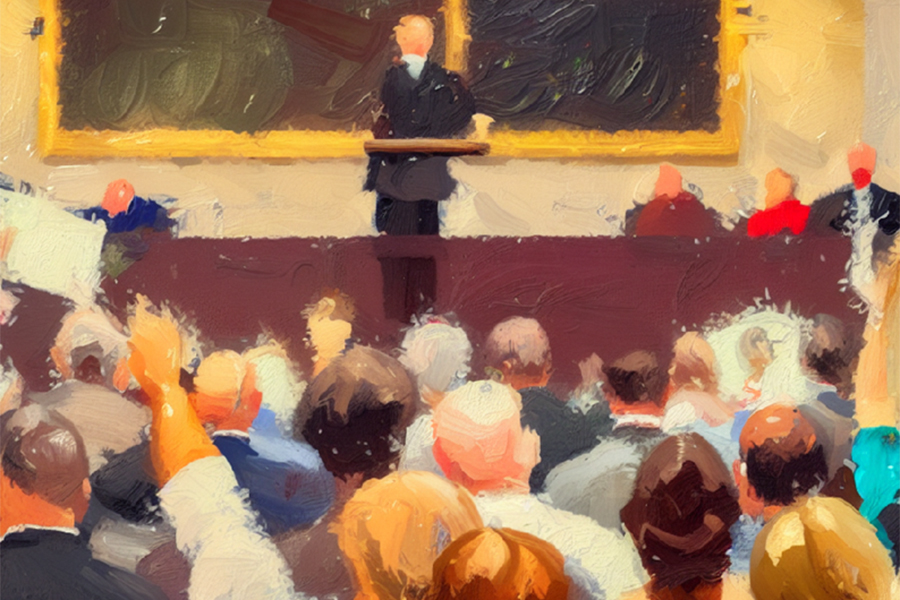The value we ascribe to culturally relevant artifacts and autographs encourages a broad swath of fraudulent activity, rendering the memorabilia market a dense forest lined with invasive plants that muddy and distort our view of the category’s true sequoias. Though seasoned collectors can often navigate this landscape with confidence and expertise, it’s fraught with hazards that provoke expensive missteps. Over time, though, authentication standards have improved, reducing the occurrence of fraud – or at least reducing our ability to fall victim to it.
In sports memorabilia, photomatching authentication – in which authenticators match unique characteristics of uniforms or equipment to their appearance in period-specific photographs – has unlocked significantly higher prices in the category. Similarly, Major League Baseball’s witness-based authentication system has gained great notoriety and inspired remarkable results for high-profile baseballs. When an Ohtani home run ball flies into the stands and onto the auction block, bidders believe it to be genuine. Meanwhile, market participants have long acknowledged and appreciated the importance of a PSA slab for sports and trading cards or a CGC holder for comic books.
In many categories though, particularly one-of-one memorabilia items, collectors have long relied on letters of authenticity and provenance to bolster their items’ case. However, as new technologies emerge and market participants grow increasingly skeptical of lesser and previously popular methods, the importance of pursuing the highest standards is only increasing. Whether you might consider selling down the road, you want to insure your collection against disaster, or you’re eager to prepare your heirs, authenticating your highest-value items to a stringent standard is very important.
Eliminating Fraud
The first benefit of pursuing a high standard of authentication is the most obvious: eliminating fraudulent products from the market.
Memorabilia and collectible markets, because of the money on offer, have long been breeding grounds for fraudulent activity. For evidence, we can look to the FBI’s Operation Bullpen, an early 2000s sting operation that uncovered over $100 million of fraudulent activity in celebrity and athlete autographs. Some frauds are more sophisticated than others, and many well-intentioned and knowledgeable collectors have been duped by fake letters of authenticity that would previously have been considered best in class. In a market awash with letters worth little more than the paper they’re printed on, pitfalls are often lurking.
The prevalence of a high volume of fraudulent memorabilia or collectible items in a market can have a significant detrimental impact on that market’s ability to grow, attract new audiences, and mature. As market participants commit to attaining the highest standards available for their items, they’re not only protecting their collection, but they’re also strengthening the reputation of the market. Popular acceptance of a standard encourages all market participants to pursue it or risk being left behind, as items without the proper authentication will become second-rate in esteem and value.
The emerging and clear contrast between stringently authenticated items and those that are second-rate protects would-be bidders from paying exorbitant prices for items that may not be credible.
Realizing Full Value
At the high end of the collectibles market, the right authentication can be the difference between just another sale and the kind of sale that makes mainstream news headlines.
Take for example the market for game-worn Michael Jordan jerseys. In 2022, a game-worn jersey from the 1997-98 season, featuring only letters of authenticity attesting to its use, sold for $74,400. The same year, another jersey from the 97-98 campaign, photomatched to a specific game, sold for $540,000. Similarly, a uniform from that season, also featuring photomatch authentication, sold for $600,000. Those are massive multiples over the result for an unphotomatched jersey, and it speaks to the differing market perceptions of items with and without high standards of authenticity.
Bidders will not pay top dollar for an item that hasn’t been subjected to those standards. Instead, they’ll more likely assume that the item failed to meet those standards and is potentially inauthentic. The absence of appropriate standards raises an immediate red flag to knowledgeable bidders who will immediately wonder why the item lacks them. While the provenance of your item may be ironclad and your certainty of its authenticity unwavering, absent the right proof, there will be a ceiling on the price well below its potential. Even if bidders believe its credibility, they’ll compete to win it at auction, properly authenticate it, and enjoy the spoils of a higher sales price months or years later.
Those should be your spoils.
Fully Insuring Collections
Just as proper authentication is a prerequisite for receiving full value when selling an item, it will also likely be of importance if you want to maximize your insurance coverage for it. As appraisals for insurance purposes will utilize auction prices and market trends for similar items to determine valuation, appraisers will look to results for items with the same authentication standards as your own. Since higher standards often result in higher value, a more stringent method will likely result in a higher appraisal than would be merited for your item without it.
The documentation obtained through the authentication process may also be required in the process of securing insurance for your collection. As massively destructive hurricanes and wildfires have plagued different areas of the country, the importance of proper insurance coverage has rarely been clearer.
Documentation for Heirs
By pursuing a high authentication standard, you’re taking another logistical step off the plate of your heirs in the event of your passing. Though you may know your item to be authentic – with or without documentation – the market won’t care in your absence, and your heirs may not know how to prove its authenticity. Similarly, they may not even know that a particular jersey was used by Michael Jordan in the 1997-98 season, for example. Though they may eventually sort it out, and through research, they may eventually locate the right service provider, why leave them with this burden?
The right authentication standards will do many favors for your item’s marketability during your lifetime, but they may be vastly more important when you’re gone.
When you’re focused on your passion for collecting, the only opinion about an item’s authenticity that matters is ultimately your own. But as collectors introduce their collections to the market at large – whether by selling items, insuring them, or passing them on – that solitary opinion becomes less important. In the interest of most capably protecting a collection and maximizing its value, authentication stands as an important pillar of a collector’s efforts. Moreover, as collectors collectively embrace a commitment to authentication, the memorabilia markets in which they operate become more reliable and safer.
Destiny Family Office specializes in helping high-net-worth collectors understand, account for, and protect the financial might of their collections, both for themselves and their families. Here, we discuss the many challenges that heirs of high-net-worth collectors may face upon inheriting a collection.
If you have a valuable collection you’d like to include in your financial, tax and estate planning, contact our Destiny Family Office team today. And don’t forget to self-assess your planning to date by completing our Collectibles Scorecard.




